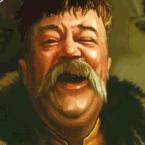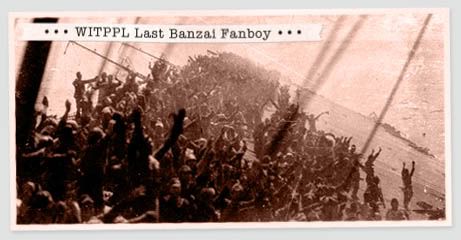ORIGINAL: John Lansford
Area night bombardment against fortified positions is a waste of shells. The USN figured that out quickly in their invasion bombardment missions against atolls; only deliberate, aimed fire at located gun positions, fired from slowly moving or anchored bombardment ships, would work. The big gun positions on Oahu were protected from everything but direct hits from big shells; area bombardment wouldn't disturb them at all. Rangefinder positions were numerous and camoflaged, so unless the Japanese knew where they were they couldn't hit them either except through luck.
If the IJN showed up offshore and started an Iwo Jima-like bombardment of Oahu, they'd get pounded. If they tried a "blitzkrieg" invasion without aerial or naval bombardment, they'd be slaughtered both before and on the beach. If the game doesn't point this out then it's not working right.
For example, in WitP I made an amphibious landing on Tinian with two big TF's of LST's and another of AP's and AK's, screened by DD's and CL's. The CD units there had a field day with my ships; all the landing craft were at least damaged and many sunk, while the AK/AP TF had several ships hit and sunk. The escorts got shot up too but nowhere near what the transports/landing craft did. An attempt against Oahu should look worse than that.
Gotta disagree. Oahu and the atolls are fundamentally different in several respects. One, Oahu was not dug in like Iwo or even Saipan (I've been in the Saipan bunkers; pretty impressive.) A lot of Oahu emplacements were open air, or "hull down", not inside mountains. On some vectors, like the Ewa side we've been discussing, there aren't any mountains. It's lava flow for a long way inland.
Second, the emplacements were known about long before the war. There was virtually no op sec on Oahu before Dec. 7. You can see many of them from roads, or small boats. Pre-war Japanese intel should have mapped them very accurately. A big problem with the atolls was we had no idea in advance where the guns were. All we had was aerial photos, mostly very close to the invasion itself, and the emplacements were only visible horizontally.
Third, I'm not talking about area bombardment. I'm talking about known firing spot, known impact point, then volume fire. Repeat for several days. You don't ever get them all, but you get a lot. If we'd had another two weeks at Iwo we would have degraded that place a lot more too (especially in terms of human factors such as shellshock), but the B-29s didn't have those two weeks to spare.
Fourth, early 1942 rangefinding is pretty useless in the dark. There would have been some counterfire, but the advantage would be with the ships, which didn't need rangefinding services.
Fifth, many/most of the CD emplacements were positioned to protect PH itself. There was a system 360 around the island, but nowhere as intense or integrated as near the channel. Images of bristling 16-in emplacements girdling the island are false. To say it was the best protected island in the world shouldn't give the impression that such protection was uniform on each axis of invasion. It was hard to get to the North Shore in 1941, and it was doubly hard to haul building supplies and 16-in magazines over those mountains as well. PH was where the fleet lived, so it was what got protected in the big gun era when the CD system was designed. Nobody lived up at Kaneohe but Samoan fruit pickers (thought those big gun admirals.)
Who's in favor of a new "Let's invade Oahu!" game with 500-yd hexes?[:)]















